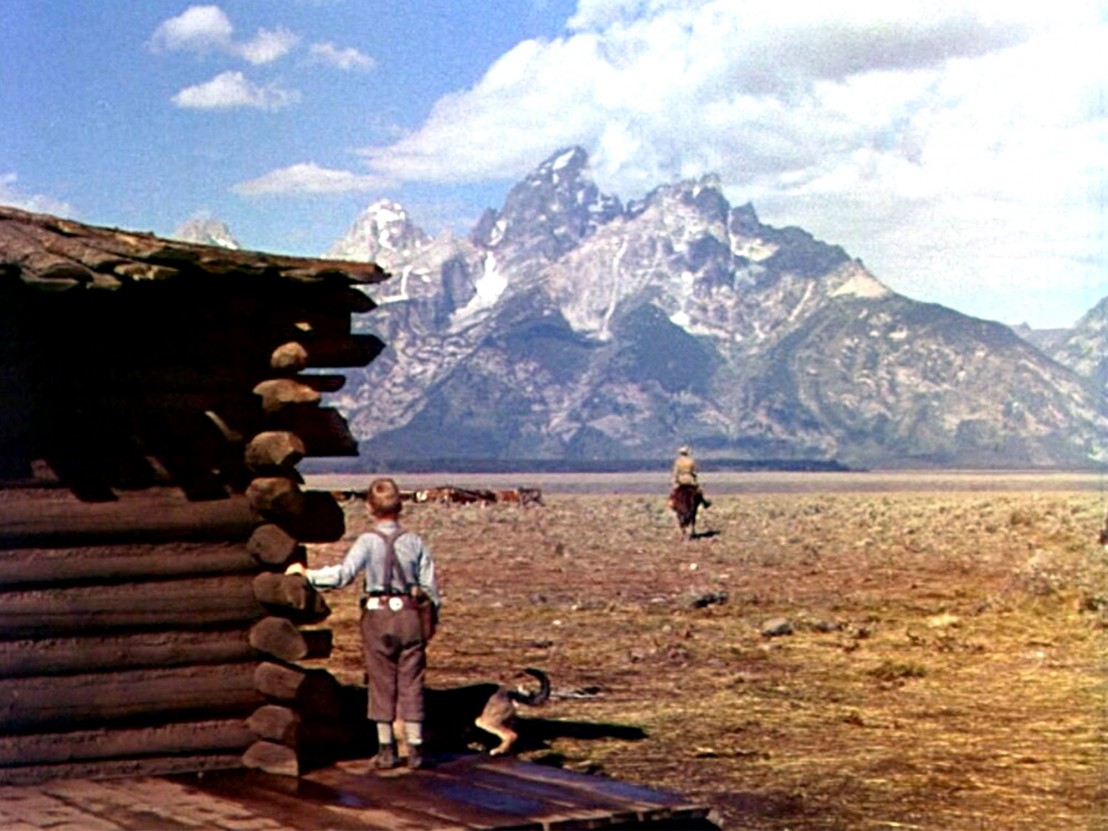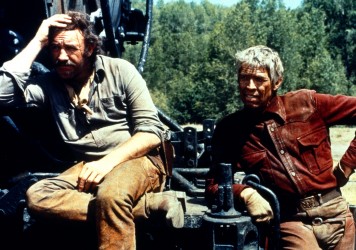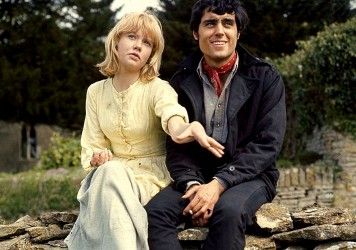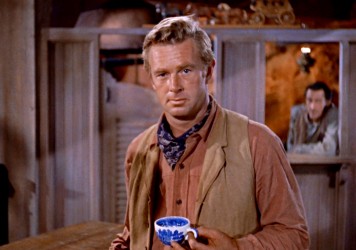
Few westerns are more loved than George Stevens’ 1953 classic Shane. Its reputation as one of the genre’s greatest entries remains intact in spite of shifting tastes over the years, with enthusiasts as unlikely as Woody Allen. Occupying a curious position within American culture of the early ’50s, it’s a loose precursor to the wellspring of ‘psychological westerns’ of the coming decade, the subject for a new May season at BFI Southbank. ‘The Psychological Western’ programme focuses on a moment in post-war culture when the horse opera had transformed into something more complex and ambiguous.
The story concerns the struggle between honest, hardworking homesteaders and the wealthy, bullying ranchers who want to claim land for their own. Shane is Alan Ladd’s steady, heroic and mysterious stranger in town, who eventually comes to help the homesteaders to retain their land. The panoramic beauty of the mountains and plains of Wyoming offer an expansive, mythic vision of the American West. Accordingly, Shane has most of the expected elements associated to the genre; the archetypal wandering cowboy hero, the black versus white hat symbolism and the embattled, hardy community of settlers preparing for a showdown. Stevens pits rugged American individualism against self-interested greed. Naturally, the little guys succeed, and at great sacrifice to the mysterious gunslinger – the most stridently and bravely individual of them all.
Shane remains stoic and peaceful in the face of humiliation by rancher goons – all calm, masculine grace and cool blond righteousness. But when tested, he comes first to the fight. However gentle a man he may be, Shane is a born wanderer and a gunslinger with a shady past. At the start of the film, Ladd becomes a farmhand to a homesteader with a small family. The young boy (Brandon DeWilde) idolises him, and a strong, unspoken attraction grows between the pioneer wife (Jean Arthur) and our hero. This family dynamic – a happy, loving one into which polite interloper Shane is thrust – is the real crux of the film. There’s an uneasy potential for this intruder to steal the role of the boy’s father.
Shane has every opportunity to let his friend ride off to die at the ranchers’ hands, but he’s too noble to take advantage. Instead, he takes the man’s place at the showdown, protecting and restoring the family dynamic he’s interrupted by going off alone to the fight. He is a willing outcast from the family home, destined to wander the dusty plains – much like Ethan Edwards in The Searchers.
It seems like something in the American spirit had changed since the tumult of the previous decade. Americans could still believe in heroes, amid the prosperity of the postwar era – audiences had not relinquished them as sullenly and cynically as they later did. But nor could they believe in quite the same way. Shane can’t be as simple and dutiful as traditional movie heroes once were, and it’s not as certain he’ll win. If he does triumph, it may come at great cost.
It’s fascinating that the tagline for the film goes ‘There never was a man like Shane’. As he slips away towards the horizon, mortally wounded, we sense that there are few of his kind left – and in truth, audiences would see fewer of them as the genre rolled into darker territory. He may be a romantic antihero, but only as long as you whisper the ‘anti’. George Stevens had emerged from his wartime newsreel service a changed man. Perhaps he thought that Shane was just too good for this world – even Hollywood’s version of it.
‘Ride Lonesome: The Psychological Western’ runs throughout may. For more info visit bfi.org.uk
Published 27 Apr 2016

By David Hayles
Bone Tomahawk isn’t the first film to push the American frontier in a surprising new direction.

A new screening programme asks vital questions about how Britain’s travellers are depicted on screen.

With Johnny Guitar returning to cinemas, we tip our hat to one of the most towering acting talents of his generation.